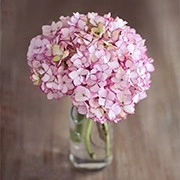Congo Tetra
When we think about adding life and color to our aquariums, few fish are as eye-catching as the Congo Tetra. Native to the central Congo River basin in Africa, this small freshwater fish isn’t just a pretty face—it’s a fascinating creature with unique colors, movements, and personality.
Today, we’ll explore what makes this species a favorite for fish enthusiasts and how we can bring their beauty into our homes.
Meet the Congo Tetra
The Congo Tetra, scientifically named Phenacogrammus interruptus, belongs to the African tetra family. In our tanks, they are medium-sized but stand out because of their striking appearance. Their body shape is classic tetra: compact, slightly oval, and covered in fairly large, reflective scales. What truly captivates us is the rainbow-like color pattern along their body. Starting with a shimmering blue at the top, transitioning to red in the middle, then golden, and back to blue near the belly—this gradient makes them look like tiny swimming rainbows.
Tail and Fin Magic
While their body colors are dazzling, the real showstopper is their tail fin. Unlike most tetra species, the Congo Tetra develops a feathery, gray-purple tail with a white edge. This tail moves gracefully with every flick, giving a sense of elegance as they swim. In our experience, males tend to be slightly larger, reaching up to 3 inches (7.6 cm), and show more intense colors.
Their tail and dorsal fins are longer and more extended, which adds to their charm in the tank. Females, while slightly smaller at 2.75 inches (7 cm), still carry the beautiful color patterns that make them desirable for aquarists.
Setting Up the Perfect Home
To keep these fish healthy and happy, we need to mimic their natural habitat as closely as possible. Congo Tetras thrive in slightly acidic, soft water, with temperatures around 73–82°F (23–28°C). They love swimming in open spaces but also appreciate plants or decorations that provide hiding spots. In our tanks, adding smooth rocks, driftwood, and dense greenery helps them feel secure and encourages natural behaviors. Lighting is another key factor—soft, indirect light brings out the true rainbow effect on their bodies, making our tanks look magical.
Feeding and Care Tips
Lykkers, feeding Congo Tetras is simple but important. They enjoy a varied diet that includes high-quality flake food, small pellets, and live or frozen options like brine shrimp and daphnia. We notice that feeding small amounts 1–2 times a day works best, as it prevents overfeeding and keeps the water clean. Regular water changes, about 25% weekly, ensure a healthy environment and allow their colors to shine. Keeping them in groups of at least six also helps them feel safe and exhibit playful schooling behavior that makes our aquariums lively.
Behavior and Social Life
Congo Tetras are peaceful and social fish. In our observations, they glide through the water with coordinated movements, occasionally flicking their tails or exploring new corners of the tank. Their social interactions are a joy to watch—males often display their fins to impress others, while females swim together calmly. Understanding their behavior allows us to appreciate their intelligence and create a tank setup that keeps them active and stress-free.
Why We Love Them
Lykkers, what draws us most to Congo Tetras is the combination of beauty and personality. Their shimmering, rainbow-colored bodies bring life to any tank, while their social, gentle nature makes them enjoyable to observe. Whether we are relaxing after work or showing our aquarium to friends, these fish never fail to impress. They are living jewels that transform a simple aquarium into a miniature underwater paradise.
Our Colorful Friends
Lykkers, keeping Congo Tetras is more than just a hobby—it’s a rewarding experience that allows us to witness nature’s artistry up close. By understanding their needs, providing a suitable habitat, and observing their lively interactions, we can fully enjoy the beauty and charm these fish bring. Next time we gaze into our tanks, we’ll see more than just fish—we’ll see tiny, colorful companions that brighten our days.
Why You NEED The Congo Tetra! Care and Breeding
Video by Prime Time Aquatics

 · Animal Team
· Animal Team